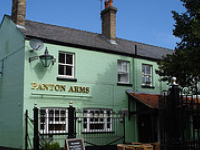Last month I was at a reunion symposium for the Gait group at the Laboratory for Molecular Biology in Cambridge. I was working there in the late 1980’s when automated chemical synthesis of DNA had just been pretty much sorted and we were getting to grips with solid phase synthesis of RNA (a much more difficult and interesting molecule than its cousin, with, as it turns out, much more interesting biology, but I digress). David Earnshaw who left the group in 2000 to work in the University Chemical Laboratory at Lensfield Road in Cambridge and subsequently became an early employee of Solexa Corporation gave a fascinating talk. He described the technology behind their next generation DNA sequencing.
The talk was particularly interesting if you are involved in NZ Genomics Limited (NZGL) because Solexa was bought up by Illumina and their technology underpins a new (and expensive) high-throughput DNA sequencer accessible to New Zealand researchers through the consortium. The technology is very cool indeed. Sequencing by synthesis.
Essentially the DNA is broken down into fragments, the fragments are immobilised on an array and each fragment is very niftily (and I am guessing, serendipitously) amplified on the same spot. The sequencing is done by conducting a compliment driven synthesis using fluorescently labelled nucleotides with each of the bases carrying a different label. With each round of synthesis each sequence incorporates its own labelled nucleotide so each spot on the array lights up with the corresponding colour and the colours are read off the array with lasers. With thousands of fragments being read off each array simultaneously you end up with very high throughput indeed. 600 gigabases per run on the big machines. The tricky part is actually doing the maths to assemble the sequences of the fragments into the sequence of the full length DNA chain. (And if that description made your eyes roll back into your head, like it did mine when I reread it, the video that makes it clear is here).
So how did this kick off in the summer of 1997? In a word; beer.
A group with an interest in sequencing DNA gathered for a beer in the Panton Arms, just around the corner from the University Chem Labs, with a group interested in the detection of single molecules as they react. At some point somebody said (again I am guessing) “What if…”
The story goes that they worked out the core of the technology (except the amplification) that evening, approached venture capitalists by November the same year and the company was started in 1998, less than a year later. In 2006 the founders sold the technology to Illumina, in the US for US$650m – Cambridge University’s largest commercialisation deal up to that point. Last year Illumina turned over US$902m, which presumably includes NZGL’s new Illumina HiSeq 2000.
So how can we innovate? Find people we trust and talk to them; freely, openly and possibly tipsily so the big ideas come out. No one has all the answers on their own and very often it takes someone else to ask before you even know the question you have the answer to. If New Zealand is so small and its people so friendly, as all the people here for the World Cup say (except possibly the Australians), surely we can talk to each other over a beer or a wine occasionally and feel comfortable enough to say “What if…”
Oh.Yes. And then we need to find someone with $650m to buy the company.


